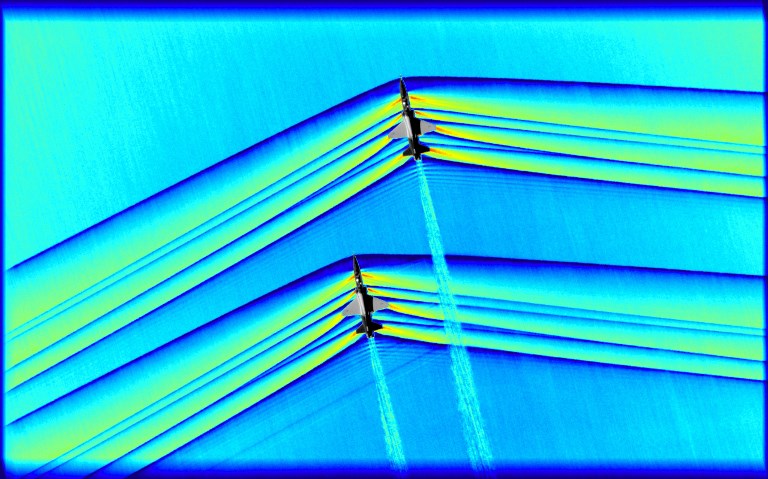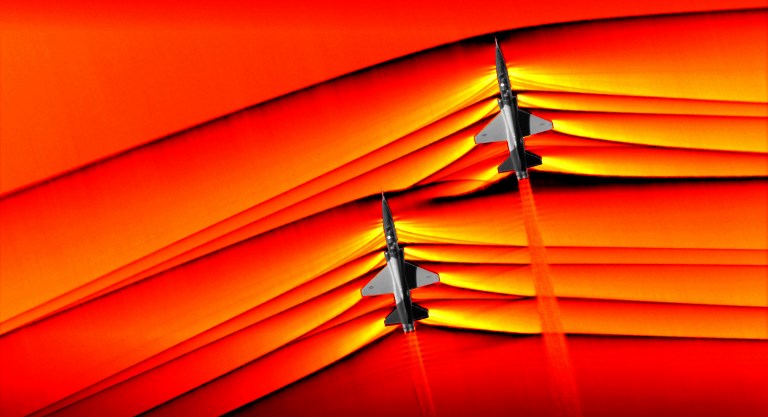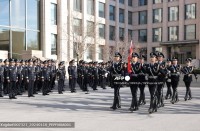
WASHINGTON, United States (AFP) — NASA has captured unprecedented photos of the interaction of shockwaves from two supersonic aircraft, part of its research into developing planes that can fly faster than sound without thunderous “sonic booms”.
When an aircraft crosses that threshold — around 1,225 kilometers (760 miles) per hour at sea level — it produces waves from the pressure it puts on the air around it, which merge to cause the ear-splitting sound.
In an intricate maneuver by “rock star” pilots at NASA’s Armstrong Flight Research Center in California, two supersonic T-38 jets flew just 30 feet (nine meters) apart below another plane waiting to photograph them with an advanced, high-speed camera, the agency said.
The rendezvous — at an altitude of around 30,000 feet — yielded mesmerizing images of the shockwaves emanating from both planes.
With one jet flying just behind the other, “the shocks are going to be shaped differently”, said Neal Smith of AerospaceComputing Inc, an engineering firm that works with NASA, in a post on the agency’s website.
“This data is really going to help us advance our understanding of how these shocks interact.”

Sonic booms can be a major nuisance, capable of not just startling people on the ground but also causing damage — like shattered windows — and this has led to strong restrictions on supersonic flight over land in jurisdictions like the United States.
The ability to capture such detailed images of shockwaves will be “crucial” to NASA’s development of the X-59, the agency said, an experimental supersonic plane it hopes will be able to break the sound barrier with just a rumble instead of a sonic boom.
A breakthrough like that could lead to the loosening of flight restrictions and the return of commercial supersonic planes for the first time since Concorde was retired in 2003.
Some countries and cities banned the Franco-British airliner from their airspace because of its sonic booms.
© Agence France-Presse







